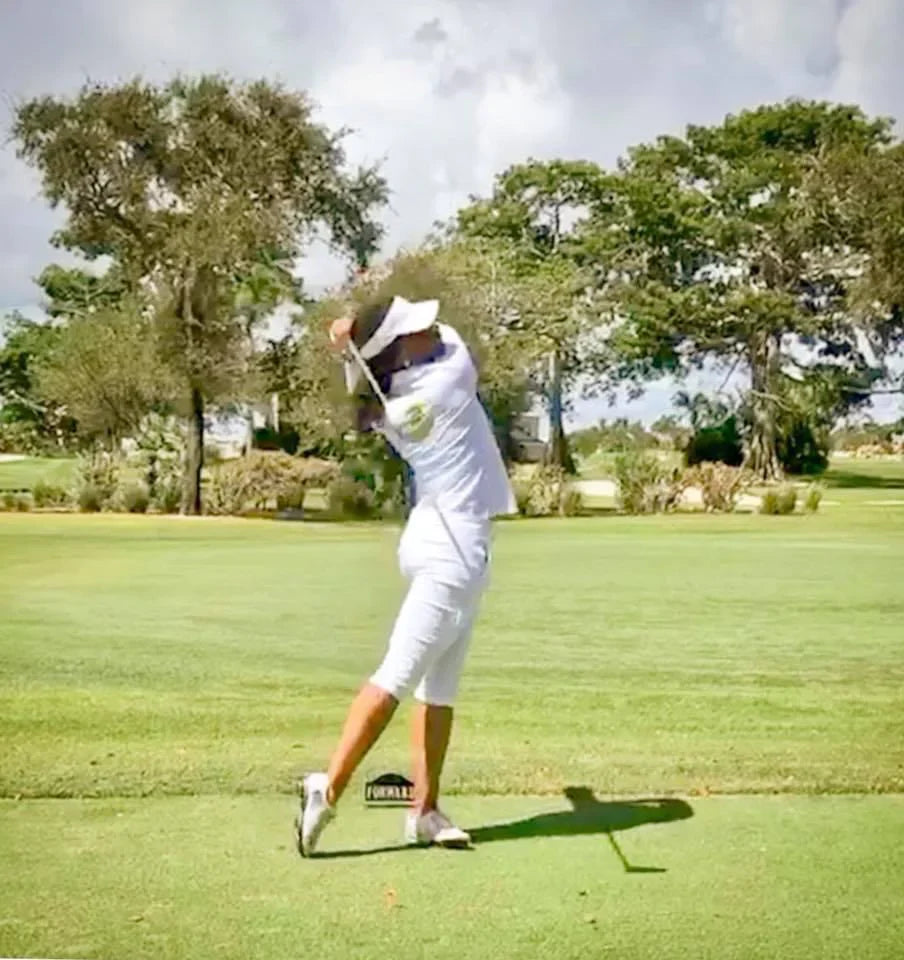
We are women who play the game. We have, at times out-drove our male partners. We have often talked about the importance of showcasing the talents of the underdog in golf, the LPGA professionals. I would love to see McDonald vs Wolff. Below us an interesting take from John Hawkins. www.orca-golf.com
Mixed-gender golf has become a scarce commodity in recent years, particularly in the United States, where the JCPenney Classic and Wendy’s 3-Tour Challenge once served as “Silly Season” staples before the PGA Tour started stomping out most of the silliness altogether. Those days are long gone, although the progressive approach taking place overseas suggests that a Tour event involving the LPGA could occur in the not-so-distant future. Something legitimate, something official. Not some December hit-and-giggle designed mainly to gobble up a few hours of TV airtime. It’s a large project, even from a hypothetical standpoint, with a couple of 10-foot hurdles to make it more complex. Camp Ponte Vedra has the vertical leap and resources to make it happen, however, at which point the game would find itself in a better place. The LPGA has struggled with its identity for a while now, unable to grab a reasonable share of the mainstream-sports market while relying on local and regional sponsors to compile a full schedule.
With two of its biggest events being played in the next three weeks, you can see for yourself. The product is there, but it needs a boost. Not only does the men’s tour have the platform, it also has at least a dozen weeks each season when the inclusion of women would turn an otherwise unrecognizable tournament into something different, something interesting, perhaps even something special. Something memorable. Something to grow upon. Australia has an event in which men and women compete together at the same venue for equal prize money, although not against one another. It is co-sanctioned by the European Tour, which had three other similar gatherings on its 2020 calendar. All three were canceled due to the coronavirus, a shame in that one of them, the Scandinavian Mixed, was to debut as the first featuring both sexes battling for the same trophy.
That’s how it has to be in America, which is where those two hurdles enter the picture. Do you make everyone play from the same tees at a mixed-gender PGA Tour event? It sounds preposterous, and the numbers back that up. Just three LPGA pros are averaging more than 280 yards per drive this season. The longest of the women, Bianca Pagdanganan, comes up 10 yards short of the men’s tour average of 296.4. There were 172 guys who drove it farther than Pagdanganan in 2019-20; that number climbs to 241 through the early stages of 2020-21.
You have to scroll down quite a ways on the stats page of the LPGA’s website to find the individual listing of its biggest hitters. No tour-wide average for driving distance is provided, leading one to believe the organization doesn’t want anyone to know that the gap between male and female tour pros has become wider than ever. A conservative estimate would place the difference somewhere in the neighborhood of 50 yards.
You can’t make the gals play a 7,400-yard golf course, but you can’t ask the big boys to tee it up from 6,500, which is still very long by LPGA standards. We’ve reached an impasse here. Unless you move the women up a couple of boxes, you really don’t have much of a tournament. Allow them to play from their comfort zone, however, and you disturb the competitive equilibrium of the event. When former PGA of America president Suzy Whaley won the 2002 Connecticut PGA Section title from tees 700 yards shorter than where all male contestants played, every New England club pro with whiskers flipped out. So did the nationwide operation that Whaley recently oversaw. The PGA quickly adopted a measure requiring all competitors to play from the same tees at its sectional events. One small step for woman, one giant complaint from man(un)kind. Enter hurdle No. 2: How do you figure out a fair purse breakdown in a mixed-gender world if the women are playing a substantially shorter venue? Moreover, are those earnings accredited to the LPGA money list, where prize money doesn’t even begin to compare with the zillions doled out on the PGA Tour?
There’s a reason almost every international tour pro now plays most of his golf in America. This year’s purse at Bay Hill was $9.3 million, a whopping five times larger than the Euro Tour offering that same week in Qatar. In fact, Tyrrell Hatton made almost as much for winning at Arnie’s place ($1,674,000) as did the entire field in the Middle East. Equal-purse allocation for men and women doesn’t mean nearly as much in Australia as it would in the U.S. The bigger the numbers, the louder the gripes. And nobody will gripe louder than the rank-and-file PGA Tour pros who would lose their spots in the Corporate Shingle Classic if Camp Ponte Vedra were to add 24 top LPGA players to the field.
It’s a tricky proposition, this cross-gender competition, but by no means is that to say it shouldn’t occur. More than just good for the game, it would send a positive message to anyone paying attention, and in the process, at least partially redefine the image of a sport not known for catering to everyone. Tradition is a beautiful thing, although not necessarily at the expense of progression. With a roomful of mathematicians, a federal arbitrator and some creative thinking, who knows? The idea might even work.





Leave a comment
This site is protected by hCaptcha and the hCaptcha Privacy Policy and Terms of Service apply.